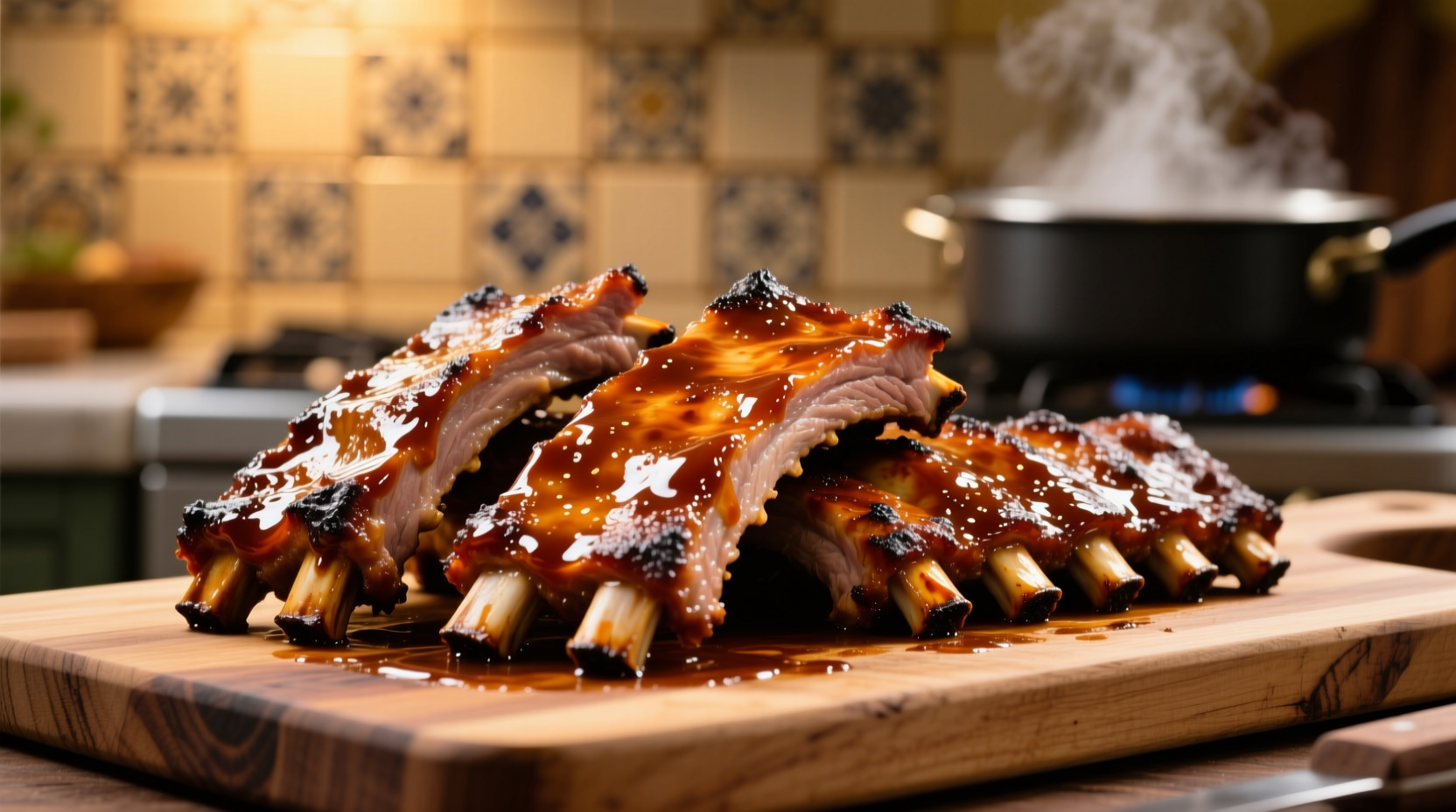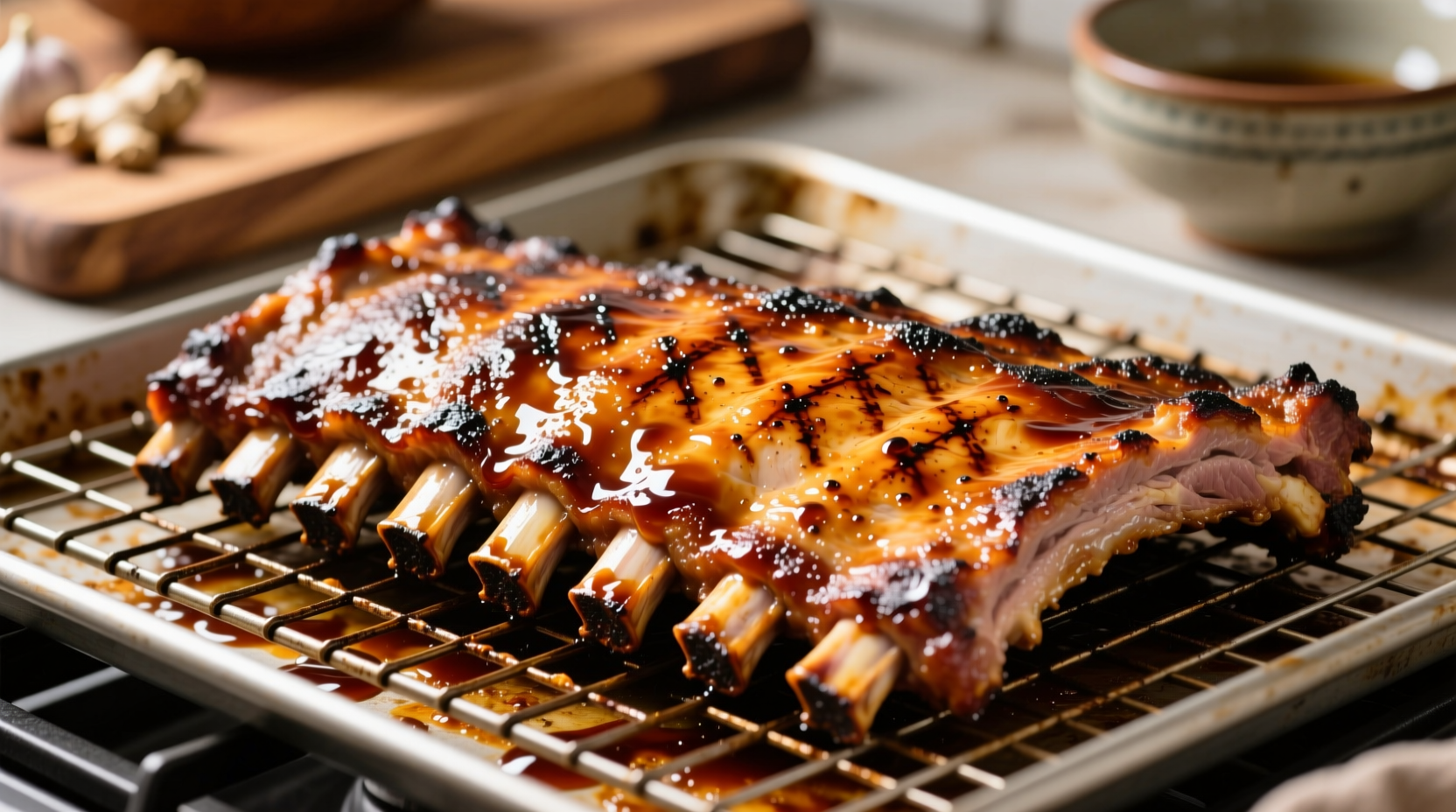The best way to cook pork ribs in an oven involves seasoning generously, wrapping in foil with liquid, baking at 275°F for 2.5-3 hours, then finishing uncovered at 350°F for 20-30 minutes until tender. This low-and-slow method ensures fall-off-the-bone texture without drying out the meat.
Perfect Oven-Baked Pork Ribs: Your Foolproof Guide
Cooking pork ribs in an oven might seem intimidating, but with the right technique, you can achieve restaurant-quality results at home. Forget complicated equipment or hours of babysitting the grill—this straightforward oven method delivers tender, flavorful ribs every time. Whether you're feeding a family or preparing for a special dinner, this guide covers everything from selecting the right cut to achieving that perfect balance of tenderness and flavor.Why Oven-Baking Works Best for Home Cooks
Unlike grilling or smoking, oven-baking provides consistent, controlled heat that's ideal for the collagen breakdown essential to tender ribs. Professional chefs at the Culinary Institute of America emphasize that maintaining a steady low temperature (275°F) for an extended period allows connective tissues to transform into gelatin without drying out the meat. This method eliminates variables like wind, temperature fluctuations, and flare-ups that often plague outdoor cooking.Understanding Your Rib Options
Not all pork ribs are created equal. Choosing the right cut makes a significant difference in your final results:| Rib Type | Characteristics | Best Cooking Time | Flavor Profile |
|---|---|---|---|
| St. Louis Cut | Square shape, uniform thickness | 2.5-3 hours | Mild, versatile for sauces |
| Baby Back Ribs | Curved, smaller bones | 2-2.5 hours | Sweeter, more tender |
| Spare Ribs | Longer, irregular shape | 3-3.5 hours | Richer, more robust flavor |
Gathering Your Essential Tools
You don't need specialty equipment for perfect oven ribs. Here's what you actually need:- Heavy-duty aluminum foil (double-layered for best results)
- Rimmed baking sheet (to catch drips)
- Meat thermometer (critical for accuracy)
- Wire rack (optional but recommended for even cooking)
- Sharp boning knife (for membrane removal)
Step-by-Step Cooking Process
Preparation: 20 Minutes
- Remove the membrane: Flip ribs bone-side up and slide a butter knife under the thin membrane covering the bones. Lift and grab with a paper towel, then pull off in one piece.
- Season generously: Apply 1-2 tablespoons dry rub per pound, massaging into all surfaces. Let sit at room temperature for 30 minutes to allow flavors to penetrate.
- Prepare foil packets: Tear two large sheets of heavy-duty foil per rack. Place ribs meat-side up on the foil with 1/4 cup liquid (apple juice, broth, or cider vinegar).
Baking: 2.5-3.5 Hours
- Wrap tightly: Seal the foil packets completely, ensuring no steam can escape. This creates a steam environment that tenderizes the meat.
- Low-and-slow bake: Place packets on a baking sheet and cook at 275°F. Baby backs need 2-2.5 hours, St. Louis cuts 2.5-3 hours, and spare ribs 3-3.5 hours.
- Check tenderness: Ribs are done when a meat thermometer reads 195-205°F and the bones pull back slightly from the ends.
Finishing: 20-30 Minutes
- Unwrap and glaze: Remove foil, drain excess liquid, and brush with 1/4 cup barbecue sauce per rack.
- Crisp the exterior: Return to oven at 350°F for 20-30 minutes until the sauce caramelizes and forms a sticky glaze.
- Rest before serving: Let ribs rest for 10 minutes to allow juices to redistribute throughout the meat.

Troubleshooting Common Issues
Dry ribs? You likely cooked at too high a temperature or didn't use enough liquid in the foil packet. The ideal moisture environment requires both the liquid component and a completely sealed packet. Tough texture? Insufficient cooking time is usually the culprit. Collagen breakdown requires both time and proper temperature—don't rush the process. Food science studies show that collagen converts to gelatin most effectively between 160-205°F over several hours. Burning sauce? Apply sauce only during the final crisping stage. Sugar in barbecue sauces caramelizes quickly at higher temperatures—adding it too early guarantees burning.Pro Tips for Restaurant-Quality Results
- Rest before cutting: Let ribs rest for 10 minutes after baking—this allows juices to redistribute for maximum moisture retention.
- Angle your cuts: When portioning, cut between bones at a slight angle rather than straight down for more attractive presentation.
- Save the drippings: Strain and reduce the cooking liquid for a flavorful pan sauce to serve alongside.
- Double the rub: Make extra dry rub and store in an airtight container—it works wonderfully on chicken, pork chops, and roasted vegetables.
Serving Suggestions That Impress
Pair your perfectly cooked ribs with complementary sides that balance textures and flavors. Creamy coleslaw cuts through the richness, while cornbread soaks up delicious juices. For a complete meal, consider:- Cold beer or apple cider to refresh the palate between bites
- Pickled vegetables for acidity that cuts through the fat
- Creamy macaroni and cheese for comforting contrast
- Fresh watermelon salad to balance the smoky flavors











 浙公网安备
33010002000092号
浙公网安备
33010002000092号 浙B2-20120091-4
浙B2-20120091-4